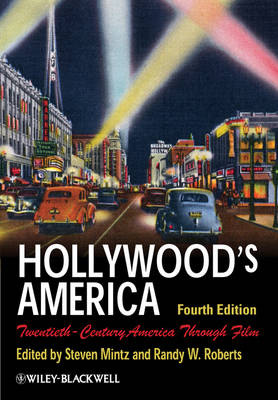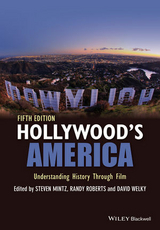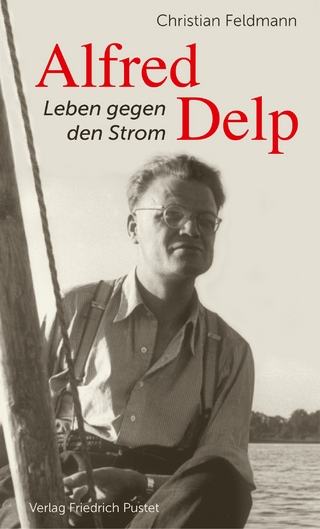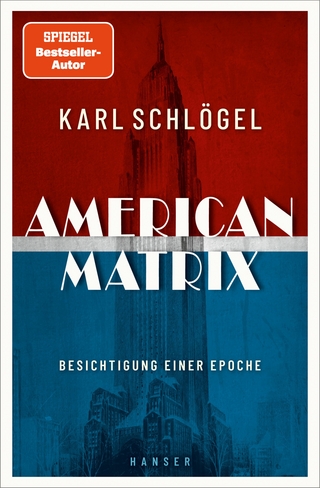
Hollywood's America
Wiley-Blackwell (an imprint of John Wiley & Sons Ltd) (Verlag)
978-1-4051-9003-9 (ISBN)
- Titel erscheint in neuer Auflage
- Artikel merken
Fully revised, updated, and extended, this compilation ofinterpretive essays and primary documents teaches students to readfilms as cultural artifacts within the contexts of actual pastevents. * A new edition of this classic textbook, which ties movies intothe broader narrative of US and film history * Ten new articles which consider recently released films, aswell as issues of gender and ethnicity * Well-organized within a chronological framework with thematictreatments to provide a valuable resource for students of thehistory of American film * Fourth edition includes completely new images throughout
Steven Mintz is Director of the Graduate School of Arts andSciences Teaching Center at Columbia University. He is the authorand editor of thirteen books, including Huck s Raft: AHistory of American Childhood (2004), which received theAssociation of American Publishers R. R. Hawkins Award for theOutstanding Scholarly Book of 2004, and the Organization ofAmerican Historians 2004 Merle Curti Award for the best book insocial history. He is the editor of African American Voices (4th edition, Wiley-Blackwell, 2009), MexicanAmerican Voices (2nd edition, Wiley-Blackwell, 2009), and Native American Voices (2nd edition, Wiley-Blackwell, 2000). Randy W. Roberts is Distinguished Professor of History atPurdue University, and specializes in recent US history, US sportshistory, and the history of popular culture. He is the author ofWhere the Domino Fell: America and Vietnam (5th edition,with James S. Olson, Wiley-Blackwell, 2006), Charles A.Lindbergh: The Power and Peril of Celebrity 1927 1941(with David Welky, Wiley-Blackwell, 2003), Jack Dempsey: TheManassa Mauler (2003), A Line in the Sand: The Alamo inBlood and Memory (with James S. Olson, 2001), ButThey Can t Beat Us : Oscar Robertson and the CrispusAttucks Tigers (1999), My Lai: A Brief History withDocuments (with James S. Olson, 1998), John WayneAmerican (with James S. Olson, 1996), and Winning is theOnly Thing: Sports in America since 1945 (with James S. Olson,1991).
List of Illustrations. Preface. Introduction: The Social and Cultural History of AmericanFilm. PART I THE SILENT ERA. Introduction: Intolerance and the Rise of the FeatureFilm. 1 Silent Cinema as Social Criticism: Kay Sloan, FrontPage Movies . 2 Silent Cinema as Historical Mythmaker: Eric Niderost, The Birth of a Nation . 3 The Revolt Against Victorianism: Lary May, DouglasFairbanks, Mary Pickford, and the New Personality . 4 Primary Sources. Edison v. American Mutoscope Company. The Nickel Madness . Mutual Film Corp. v. Industrial Commission of Ohio. Fighting a Vicious Film: Protest Against The Birth of aNation. Boston Branch of the National Association for the Advancement ofColored People, 1915, Analysis by Francis Hackett. PART II HOLLYWOOD S GOLDEN AGE. Introduction: Backstage During the Great Depression: 42ndStreet, Gold Diggers of 1933, and FootlightParade. 5 Depression America and its Films: Maury Klein, LaughingThrough Tears . 6 The Depression s Human Toll: Peter Roffman and JimPurdy, Gangsters and Fallen Women . 7 Depression Allegories: Thomas H. Pauly, Gone withthe Wind and The Grapes of Wrath as Hollywood Historiesof the Great Depression . 8 African Americans on the Silver Screen: Thomas R. Cripps, The Evolution of Black Film . 9 Primary Sources. The Introduction of Sound. Pictures That Talk . Review of Don Juan. Silence is Golden . Film Censorship. The Sins of Hollywood, 1922. The Don ts and Be Carefuls . The Motion Picture Production Code of 1930. PART III WARTIME HOLLYWOOD. Introduction: Hollywood s World War II Combat Films. 10 Casablanca as Propaganda: Randy Roberts, YouMust Remember This: The Case of Hal Wallis Casablanca . 11 Bureau of Motion Pictures Report: Casablanca. 12 John Wayne and Wartime Hollywood: Randy Roberts, JohnWayne Goes to War . 13 The Woman s Film: Jeanine Basinger, When WomenWept 14 Primary Sources: US Senate Subcommittee Hearings on MotionPicture and Radio Propaganda, 1941. PART IV POSTWAR HOLLYWOOD. Introduction: Double Indemnity and Film Noir. 15 The Red Scare in Hollywood: Peter Roffman and Jim Purdy, HUAC and the End of an Era . 16 The Morality of Informing: Kenneth R. Hey, Ambivalenceand On the Waterfront . 17 Science Fiction as Social Commentary: Stuart Samuels, The Age of Conspiracy and Conformity: Invasion of theBody Snatchers (1956). 18 The Western as Cold War Film: Richard Slotkin, Gunfighters and Green Berets: The Magnifi cent Seven and the Mythof Counter-Insurgency . 19 Popular Culture in the Age of White Flight: Eric Avila, Film Noir, Disneyland, and the Cold War (Sub)UrbanImaginary . 20 Primary Sources. United States v. Paramount Pictures, Inc. (1947). Hearings Regarding the Communist Infi ltration of the MotionPicture Industry. US House of Representatives Committee on Un-American Activities,1947. US House of Representatives Committee on Un-American Activities,1951. The Miracle Decision. Joseph Burstyn, Inc. v. Wilson, Commissioner of Education ofNew York, et al. (1952). PART V HOLLYWOOD AND THE TUMULTUOUS 1960s. Introduction: Bonnie and Clyde. 21 A Shifting Sensibility: Charles Maland, Dr.Strangelove: Nightmare Comedy and the Ideology of LiberalConsensus . 22 Films of the Late 1960s and Early 1970s: Michael Ryan andDouglas Kelner, From Counterculture to Counterrevolution,1967 1971 . 23 Reaffi rming Traditional Values: Daniel J. Leab, TheBlue Collar Ethnic in Bicentennial America:Rocky . 24 Presenting African Americans on Film: Aram Goudsouzian, The Rise and Fall of Sidney Poitier . 25 Coming to Terms with the Vietnam War:Randy Roberts and DavidWelky, A Sacred Mission: Oliver Stone andVietnam . 26 Primary Sources: The Hollywood Rating System, 1968. PART VI HOLLYWOOD IN OUR TIME. Introduction: A Changing Hollywood. 27 Feminism and Recent American Film: Aspasia Kotsopoulos, Gendering Expectations: Genre and Allegory in Readings ofThelma and Louise . 28 Hollywood Remembers World War II: John Bodnar, Saving Private Ryan and Postwar Memory inAmerica . 29 East Meets West: Minh-Ha T. Pham, The Asian Invasion(of Multiculturalism) in Hollywood . 30 Immigration at the Movies: Carlos E. Cortes, TheImmigrant in Film: Evolution of an Illuminating Icon . 31 Movies and the Construction of Historical Memory: StevenMintz, Movies, History, and the Disneyfication of the Past:The Case of Pocahontas . Bibliography of Recent Books in American Film History. Index.
| Zusatzinfo | Illustrations |
|---|---|
| Verlagsort | Chicester |
| Sprache | englisch |
| Maße | 171 x 243 mm |
| Gewicht | 644 g |
| Themenwelt | Kunst / Musik / Theater ► Film / TV |
| Geisteswissenschaften ► Geschichte ► Regional- / Ländergeschichte | |
| ISBN-10 | 1-4051-9003-5 / 1405190035 |
| ISBN-13 | 978-1-4051-9003-9 / 9781405190039 |
| Zustand | Neuware |
| Haben Sie eine Frage zum Produkt? |
aus dem Bereich



